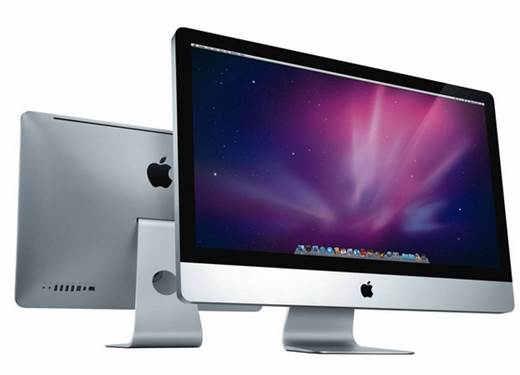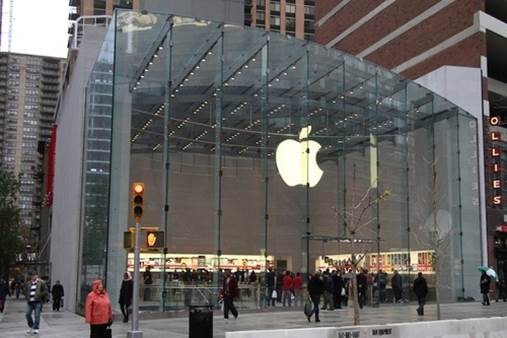Apple makes the best computers in the
world: you literally can’t buy a crappy Mac. Our expert advice will help you
pick the right one for you.
Apple's machines are like fine-tuned sports
cars: high-performance, high-quality components wrapped in an eye catching
package that’s utterly fun to drive. They'll last for years, but you might want
to steer clear of the showroom in the meantime, because the new models will
tempt you even when your trusty steed still has plenty of miles to go. Lucky
for us, we get to test-drive each new Mac, and the last few months of 2012 saw
big steps taken in the lineup of desktop Macs, reviewed here. While we're still
waiting to see what's going to happen with the Mac Pro this year, the new iMacs
and Mac mini are plenty capable and they complicate the question of which Mac
you should buy.

Apple's
machines are like fine-tuned sports cars: high-performance, high-quality components
wrapped in an eye catching package that’s utterly fun to drive.
Most people assume that a laptop is the
answer. Apple makes the best notebooks on the market, but the rise of the
tablet for portable computing means you might not necessarily need a computer
you can bring with you. Mac minis are flexible enough to be used as media
centers, boasting a small form-factor and built-in HDMI port, and an iMac can
even be an external display for a Mac notebook with Thunderbolt just connect
the two with a Thunderbolt cable and press Command-F2 on the iMac's keyboard to
enter Target Display Mode. Is it time for a desktop revolution? Read on for our
buying advice, and in-depth reviews of the late-2012 models.
How To Buy A Mac
Questions to ask yourself before you
go Apple-picking
1.
Desktop or laptop?
Apple's laptops are amazing, and outsell
the desktop line handily. But with iPhones and iPads being so capable at so
many tasks, sometimes laptops wind up sitting on a desk most of the time,
anyway. Desktop Macs have more storage, bigger screens, more powerful graphics,
higher RAM ceilings, and more inputs. Obviously, you can’t tote an iMac along
on vacation, but when you think about it, almost everything you would do with
that iMac, you can do with an iPad, which is lighter than a laptop, plus
cheaper, easier to get online, and its battery lasts two or three times as
long. And for those last few things you can't accomplish with native iOS apps,
you can fire up a VNC app like Splashtop 2 Remote Desktop and control your always-on
desktop Mac right from your iPad's touchscreen.

Should
I Get A Laptop Or A Desktop Computer?
2.
Which Model?
iMacs are Apple's flagship desktop model, I
and we love the all-in-one convenience. The new slim design is slick, but the
best part about it isn’t the thin edge you can only really appreciate from the
side. (Who looks at their computer from the side, anyway?) It’s the beautiful,
glossy screen with deep blacks and brilliant color and Apple reduced
reflections by 75 percent. The Mac mini is a plenty capable machine, too, and a
low-cost point of entry if you already own a display you like, plus a mouse and
keyboard. The mini works well as a media-center Mac, too; its HDMI port lets
you connect it to an HDTV without needing an adapter, and it's not much bigger
than a router. The Mac Pro is the most easily upgraded Mac, but it sorely needs
a refresh aside from a minor processor bump last year, it hasn't been updated
significantly since 2010. The 27-inch iMac is our pick here (see review p46).
If you’d rather get a laptop, follow the
features. If you truly, truly need an optical drive, go for the non-Retina
MacBook Pro.
If you'll be toting the machine everywhere
you go, you’ll appreciate the lightness of a MacBook Air. And if you need the
most graphical and processing power available, the top-of-the-line MacBook Pro
with Retina display can handle pro-level applications and development tools
without breaking a sweat. Our advice is Retina if you can afford it, MacBook
Air if you can’t, and the regular MacBook Pro if you simply can't live without
your optical discs.
3.
When and where to buy?
It stinks when you drop a couple grand on a
new computer, and Apple promptly rolls out an update that leaves your brand-new
machine in the dust. Before you plunk down a credit card, check out
http://buyersguide, macrumors.com, which tracks how long it's been since each
model has been refreshed.

The
Apple Store is a great place to play with new Macs and narrow down your picks,
but you'll need to shop online to save on refurbished models.
A just-refreshed machine is a good buy, but
if a particular model has languished a while, you might want to wait, if you
can, in case an update is around the corner.
Deals on Apple products are rare, so we
usually just buy directly from Apple, a must for build-to-order options like
Fusion Drive. But don't forget to check the Refurbished Macs section of the
online store, http://store.apple.com. Refurbished Macs come with the same
one-year warranty as new Macs, and you can purchase an AppleCare Protection
Plan for three years of full coverage. Be sure to read all the specs: some are
stock models, some were upgraded at the original purchase time, so be sure you
understand what you're getting.